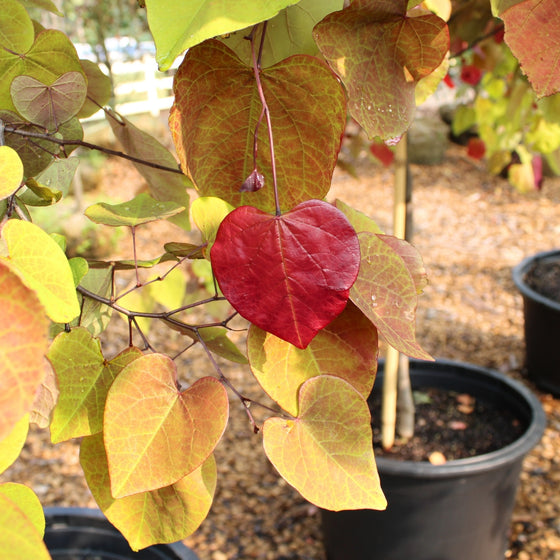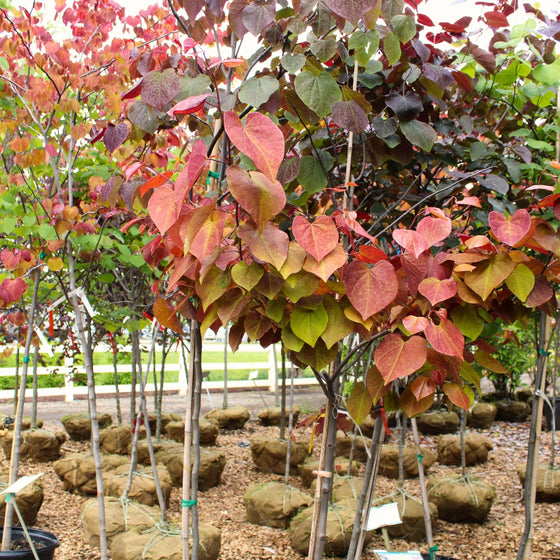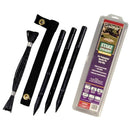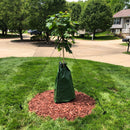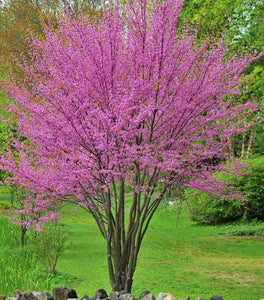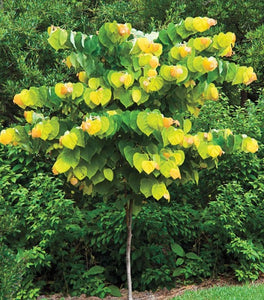
Images Depict Mature Plants
Flame Thrower Redbud Trees for Sale Online
Picture this: you walk out your door on a crisp spring morning to a breathtaking array of reds, oranges, yellows, and greens, all encapsulated within one tree. This vision doesn't have to be imaginary, for with the Flame Thrower Redbud Tree, such becomes a reality.
Like your favorite Eastern Redbud, you can look forward to sweet pink flowers emerging in early spring, often before anything else is blooming!
Beyond the blooms, the classic red heart-shaped foliage on your typical Redbud Tree takes on a new form in the Redbud Flame Thrower. Foliage emerges a deep burgundy red in late spring and experiences an ombre transformation from bright yellow to green at maturity. But the show's not over yet! These rainbow leaves deliver vibrant orange hues in the fall for a grand finale!
The Flame Thrower® Redbud reaches a mature height of 20 feet tall with a spread of about 15 feet wide, making it the ideal option for smaller landscape projects. These gorgeous specimen trees enjoy conditions of full sun to part shade and well-draining soils.
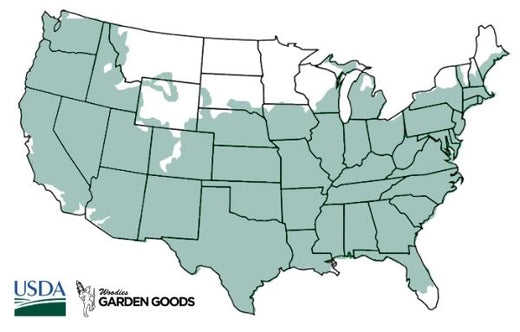
| Hardiness Zone: | 5-9 |
|---|---|
| Mature Height: | 15-20 Feet |
| Mature Width: | 15-20 Feet |
| Classification: | Broad leaved deciduous flowering tree |
| Sunlight: | Full sun to partial sun |
| Habit: | Upright |
| Foliage: | Ombre Red To Green To Yellow |
| Flower Color: | Rosy-pink |
| Pruning Season: | Late spring after flowering |
| Soil Condition: | Any well drained soil |
| Water Requirements: | Water well until established |
| Uses: | Tolerates moist soil and full sun. Full sun brings out the best fall color. Will adapt to drier sites |
How to Care for Flame Thrower Redbud
After you purchase your Flame Thrower Redbud Tree, be sure to read the recommended care instructions to ensure your plant stays happy and healthy for years to come!
How do I water Rising Sun Redbud Trees?
After planting the Flame Thrower Redbud Tree make sure to water it thoroughly. At first, most of the water you put on the plant will run away until the soil is soaked. A general rule of thumb is to count to 5 for every one gallon of pot size. Check the plant's health daily for the first week or so and then every other day. Water the tree using the counting method for the first few weeks.
How do I mulch Flame Thrower Redbud Trees?
We highly recommend that you mulch your Flame Thrower Redbud with either a ground hardwood mulch or a ground cypress mulch depending on your local availability. Any mulch will do, but cypress or hardwood mulch will be of a higher quality and provide better nutrition overall as they break down. Mulching helps keep weeds away that compete with your new investment for water and nutrients. A 2 to 3-inch layer of mulch is sufficient but does not cover any part of the stem with mulch. It's better to leave a one-inch gap of space between the mulch and the stem or trunk of the plant.
How do I plant Flame Thrower Redbuds?
When planting your newly purchased Flame Thrower Redbud, dig a hole twice as wide as the root system but not deeper. Depending on the quality of your existing soil, you may need to add locally sourced compost or topsoil to the back-fill soil. Adding compost or topsoil will help the young feeder roots of Flame Thrower Redbud spread through the loose, nutrient-rich soil, much easier than if you used solely the existing soil, which more times than not will be hard and compacted. A good rule is that you should still see the soil the plant was grown in after back-filling the hole. Bio-tone starter fertilizer is a starter fertilizer that provides plants with a mycorrhizal fungus. It is a naturally occurring beneficial fungus that colonizes the new growing roots of plants. It creates a barrier between the roots, fungus, and pathogens that can cause root rot.
How do I fertilize Flame Thrower Redbud?
Native trees such as Flame Thrower Redbud grow best when fertilized lightly in the spring once frost has passed with a well-balanced, extended-release fertilizer such as Espoma Tree-tone. Fertilize the Rising Sun Redbud Tree again 6 to 8 weeks later to encourage denser foliage or faster growth of young trees. Don't fertilize the Flame Thrower Redbud after August. Fall is the time for plants to begin preparing for dormancy. Fertilizing at this time may stimulate new growth that will be too tender to withstand the winter. In the South, a late May application and another in July would be perfect. More northern areas may wish to fertilize only once in June or July. Over-fertilization can be much more detrimental than under-fertilization. "Fertilizer burn" can occur when too much fertilizer is applied; this will result in their roots drying out and being damaged or even dying.

